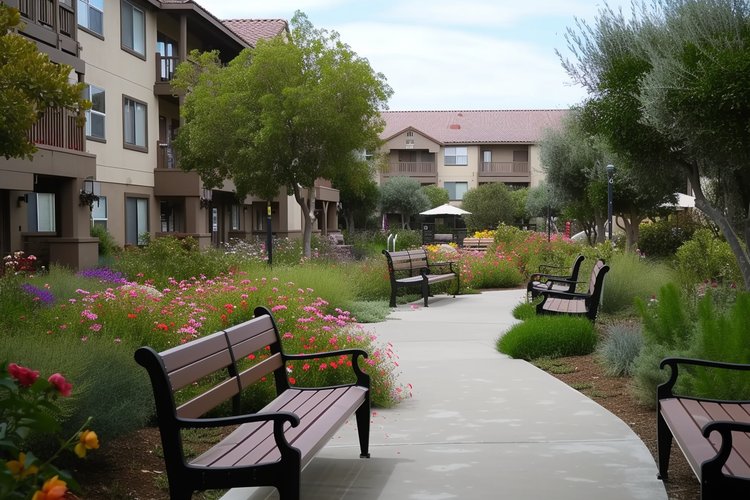Housing Options for Older Adults: A Comprehensive Guide
Finding the right housing as you age can significantly impact your quality of life and financial stability. Age-restricted communities offer specialized living arrangements designed specifically for older adults, providing amenities, social opportunities, and sometimes financial assistance for those who qualify. Understanding the different types of housing available, from market-rate to subsidized options, helps you make informed decisions about your living situation during retirement years.

What Are 55 and Older Apartments for Rent?
55 and older apartments for rent are age-restricted housing communities designed exclusively for residents who meet the minimum age requirement, typically 55 or 62 years old. These communities are protected under the Housing for Older Persons Act, which allows them to exclude families with children. The apartments range from studio units to multi-bedroom layouts, often featuring amenities like fitness centers, community rooms, planned social activities, and sometimes on-site services. These communities foster environments where residents share similar life stages, creating opportunities for social connections and friendships. Many properties offer maintenance-free living, with landscaping, snow removal, and exterior upkeep handled by management, allowing residents to enjoy a more relaxed lifestyle without the burdens of home maintenance.
Understanding Senior Apartments for Rent
Senior apartments for rent encompass a broad category of housing specifically designed for older adults, typically those aged 55, 62, or older depending on the property. Unlike assisted living facilities, these apartments are independent living arrangements where residents maintain their autonomy and do not require daily medical assistance. These apartments come in various styles, from garden-style complexes to high-rise buildings, and may be privately owned or managed by nonprofit organizations. Features commonly include accessible design elements such as grab bars, walk-in showers, wider doorways, and emergency call systems. Many communities provide transportation services for shopping and medical appointments, organized social activities, and common areas for gatherings. The rental model offers flexibility compared to purchasing a home, allowing older adults to relocate more easily if their needs change or if they wish to be closer to family members.
How Do Low Income Apartments for Rent Work?
Low income apartments for rent provide affordable housing options for older adults with limited financial resources. These subsidized housing programs are funded through federal, state, or local government initiatives, with HUD Section 202 and Section 8 Housing Choice Voucher programs being among the most common. Eligibility is determined by income limits, typically set at 50 to 80 percent of the area median income, and applicants must provide documentation of their financial situation. Rent in these apartments is usually calculated as a percentage of the tenant’s income, often around 30 percent, making housing costs manageable for those on fixed incomes from Social Security or small pensions. Wait lists for subsidized housing can be lengthy, sometimes extending several months to years depending on the location and availability. Application processes require patience and thorough documentation, but the financial relief these programs provide can be substantial for eligible residents.
Comparing Costs and Provider Options
Understanding the cost structure of age-restricted housing helps in planning and budgeting for this important life transition. Market-rate properties typically range from $1,200 to $3,500 per month depending on location, size, and amenities offered. Subsidized housing costs are income-based, usually requiring tenants to pay approximately 30 percent of their monthly income toward rent. Additional fees may include utilities, parking, pet fees, and optional services like meal plans or housekeeping.
| Housing Type | Provider Examples | Monthly Cost Estimation |
|---|---|---|
| Market-Rate 55+ Communities | Erickson Living, Holiday Retirement, Brookdale | $1,500 - $3,500 |
| HUD Section 202 Housing | Local Housing Authorities, Nonprofit Organizations | $300 - $800 (income-based) |
| Section 8 Voucher Housing | Private Landlords accepting vouchers | 30% of monthly income |
| LIHTC Properties | National Church Residences, Volunteers of America | $600 - $1,200 |
| State-Funded Housing | State Housing Finance Agencies | $400 - $1,000 (income-based) |
Prices, rates, or cost estimates mentioned in this article are based on the latest available information but may change over time. Independent research is advised before making financial decisions.
What Amenities Can You Expect?
Age-restricted communities offer varying levels of amenities depending on whether they are market-rate or subsidized properties. Market-rate communities often feature extensive amenities including fitness centers with appropriate equipment, swimming pools, libraries, computer labs, craft rooms, and beautifully landscaped grounds. Organized activities such as exercise classes, game nights, educational seminars, and group outings provide social engagement opportunities. Some upscale communities include restaurants, beauty salons, and concierge services. Subsidized properties typically offer more modest amenities but still provide community rooms for gatherings, laundry facilities, and sometimes basic recreational spaces. Regardless of price point, most age-restricted housing prioritizes safety features like secure entry systems, well-lit common areas, and emergency response capabilities to ensure resident well-being.
How to Apply for Age-Restricted Housing
Applying for age-restricted housing requires preparation and understanding of the specific requirements for each property type. For market-rate properties, the process resembles standard rental applications, requiring proof of income, credit checks, rental history, and references. Applicants should be prepared to demonstrate they can afford the monthly rent, typically requiring income at least three times the rental amount. For subsidized housing, the application process is more complex, requiring extensive income documentation including tax returns, Social Security statements, bank statements, and asset information. Applicants must meet age requirements and income limits specific to each program. Many housing authorities and management companies now offer online applications, though paper applications remain available. Given the competitive nature of affordable housing for older adults, applying to multiple properties simultaneously increases chances of securing suitable housing within a reasonable timeframe.
Making the Right Choice for Your Situation
Selecting the appropriate housing involves evaluating personal needs, financial circumstances, and lifestyle preferences. Consider factors such as proximity to family, access to healthcare facilities, transportation options, and community atmosphere. Visit multiple properties to compare amenities, meet staff, and talk with current residents about their experiences. Review lease agreements carefully, understanding what is included in rent and what costs extra. For those considering subsidized housing, start the application process early due to potential wait times. Assess whether the community offers opportunities for social engagement that match your interests and whether the physical layout accommodates any mobility concerns. Financial planning should account not only for current costs but also potential increases and how housing expenses fit within your overall retirement budget. Taking time to thoroughly research and visit options ensures you find housing that supports your independence, comfort, and quality of life during your retirement years.




